The Narva Art Residency (NART) is an art institution located in a small town at the border between Estonia and Russia, offering artists an opportunity to experience life on the edge. Resident artists typically stay in Narva for one to two months, often arriving from neighbouring countries or elsewhere in Europe, but occasionally also from more distant places such as Chile, Zimbabwe and Japan. The residency building, once a villa for the Kreenholm textile factory’s directors, now also includes an art gallery with shows by both local and international artists.
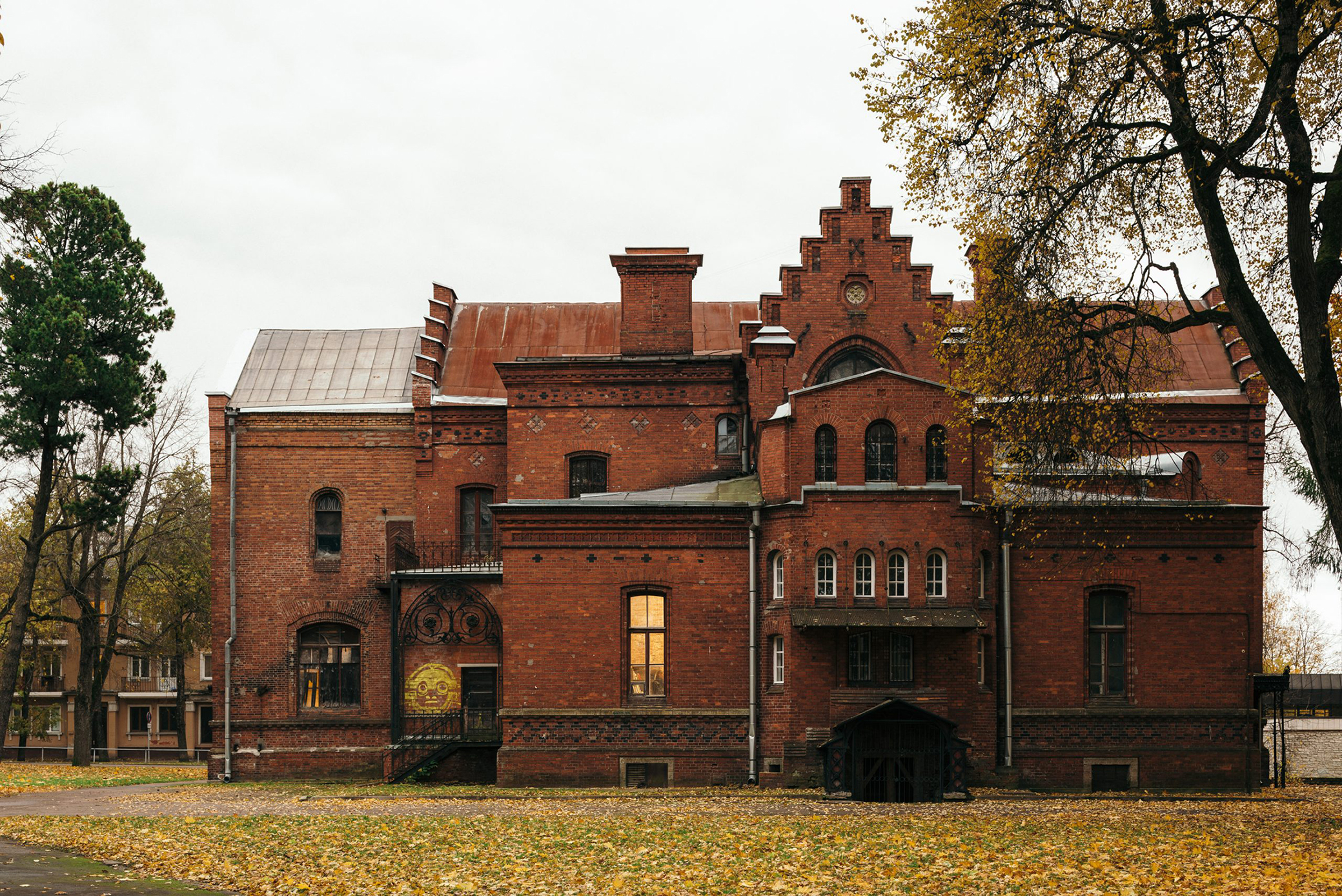
To speak about NART, however, one must start with Narva, as the place itself defines the essence of the residency. The surrounding border town is simultaneously a quiet, sleepy periphery and a place deeply influenced by global geopolitics, reflecting its energy and occasionally exuding tension. The corners seem edgier here, the surface rougher than, for example, in the capital. The light does not fail to expose these contrasts.
Narva’s history stretches back centuries – the castle on the lower reaches of the Narva River was established by the Danes in the 13th century. In the 17th century, Narva became the capital of Ingria – a historical eastern Baltic region inhabited by Ingrian Finns and then under Swedish rule. Several centuries later, most buildings, including the historic Old Town, were destroyed during bombing raids in the Second World War. During the Soviet period, Narva developed into an industrial town. Following the collapse of the Soviet Union, the Estonian-Russian border was drawn along the Narva River – the greater part of the town remained on the Estonian side, while the district of Ivangorod (Jaanilinn) fell on the other side.
Today, there is little left of the once-thriving industrial town; over the past thirty years, its population has shrunk by a third, from 80,000 to 50,000. Here, Europe begins or ends, in its political and economic dimensions. At the same time, Narva is the largest Russian-speaking city in Europe – Russian is the mother tongue of 96% of its residents. In recent decades, provocations by Russia in Eastern European countries, as well as the current war in Ukraine, have repeatedly raised the question, “Is Narva next?”
Driven by this question, numerous foreign journalists have visited this border town over the past several years, occasionally exhausting locals with their inquiries. Often their goal is simply to find elderly ladies to praise the neighbouring country’s leader – and thus their story is done. Foreign media rarely takes the time to delve into how Narva residents actually feel and what they think.
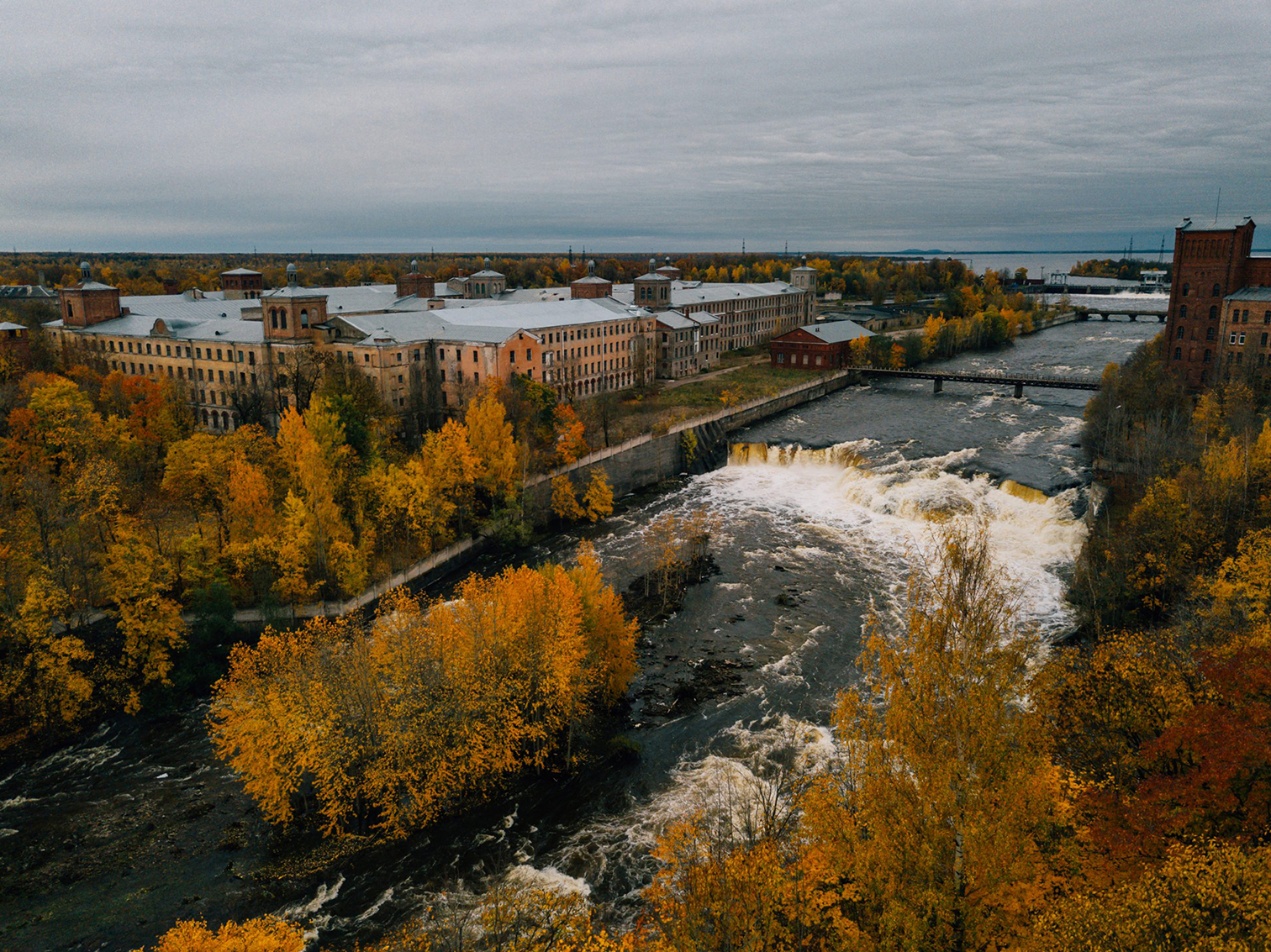
Narva Art Residency building was part of the nearby Kreenholm manufactury. Photo: Tõnu Tunnel
In this border zone, differing world views, religions, languages, media landscapes and cultures collide and intertwine. This context provides fertile ground for artistic inspiration as well as for stereotypes to form. Living and working in Narva gradually reveals how outsiders tend to paint a picture of the town in broad brushstrokes. Issues of identity, belonging, patriotism, monuments from the Soviet era, educational reforms and language skills are frequently lumped together. Yet every answer to every question contains many nuances, which often remain unacknowledged. It is simpler to label Narva an enfant terrible – unpredictable, troublesome and prone to misbehaviour.
From an international perspective, Narva’s reputation is somewhat better; the broad brushstrokes are replaced by sweeping generalisations. Many people remain unaware that Narva is neither a typical nor an average Estonian city. The only downside is the perceived threat of war – one artist-in-residence, for example, did not even dare to tell their family where they were going. Yet, Narva is calm, and it feels safe.

Every residency has its own niche
Some artist residencies offer nature and tranquillity, while others provide the bustle and networking opportunities of a capital city. Many residencies are retreats – places to relax and disconnect from the world. Others expect artists to engage specifically with their location, drawing inspiration from the stories, people and opportunities around them. If an artist were to do the same work at a residency as they would in their home studio, the residency would lose its purpose. Establishing and maintaining an artist residency clearly serves as a developmental tool, especially for smaller towns, villages and peripheral areas, helping them maintain connections with the wider world. Artists have a global reach and can bring the world to your doorstep.
In recent years, NART’s residency programme has focused on socially engaged artistic practices. The committee selects artists based on this emphasis, giving priority to those whose work arises through direct interaction with people. Workshops have proven to be one of the most common and successful points of contact – for example, Zimbabwean artist Zacharaha Magasa conducted workshops on creating sculptures from car tyres, while Ukrainian artist Masha Pryven worked with local youth to craft new passports for themselves.
This focus helps NART fulfil the mission established at its inception: contributing to integration, enriching the local cultural environment, providing art education and creating dialogue through art and culture. Artists with inclusive practices naturally advance these goals.
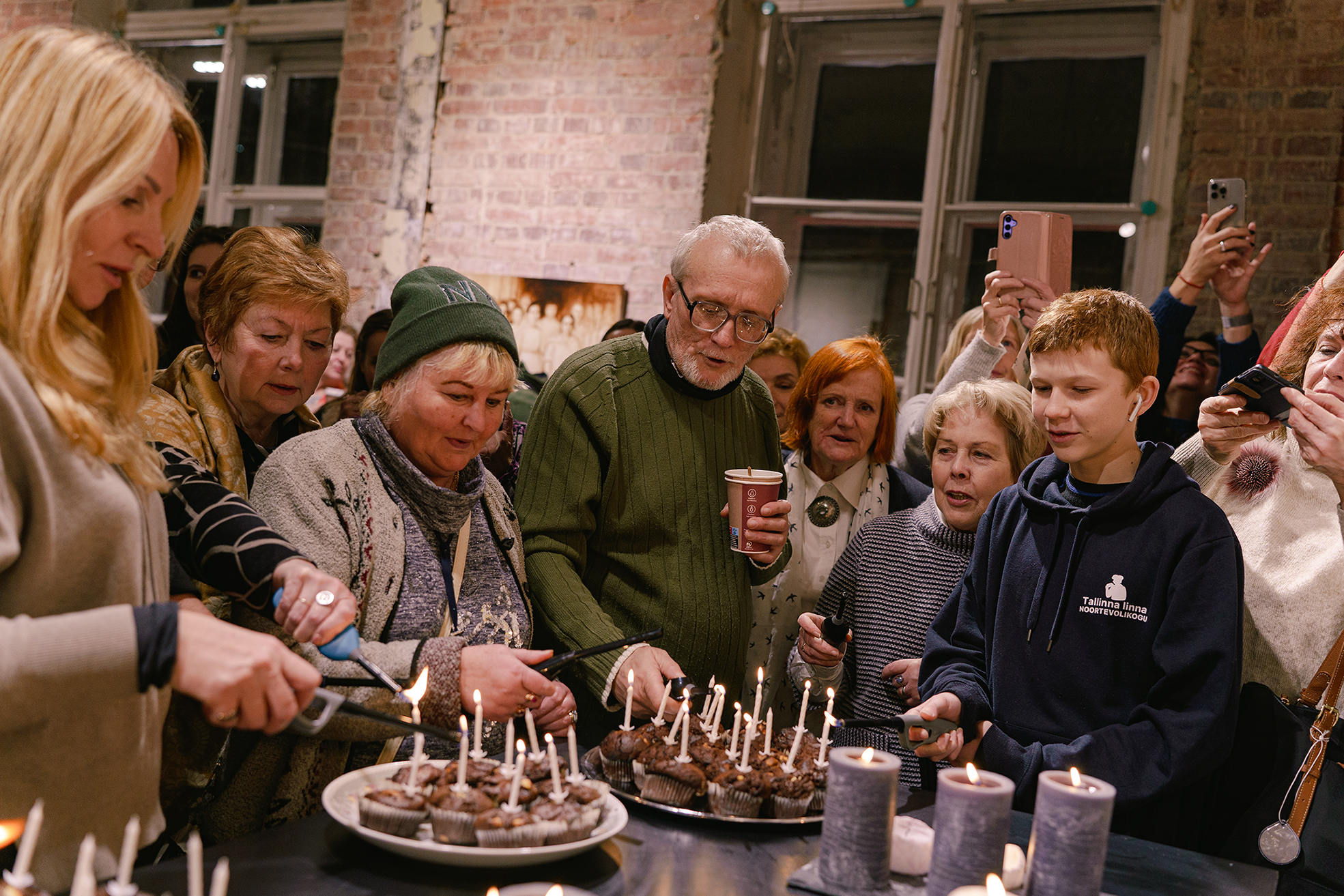
Narva Art Residency birthday event in 2023. Photo: Jelizaveta Gross / Station Narva
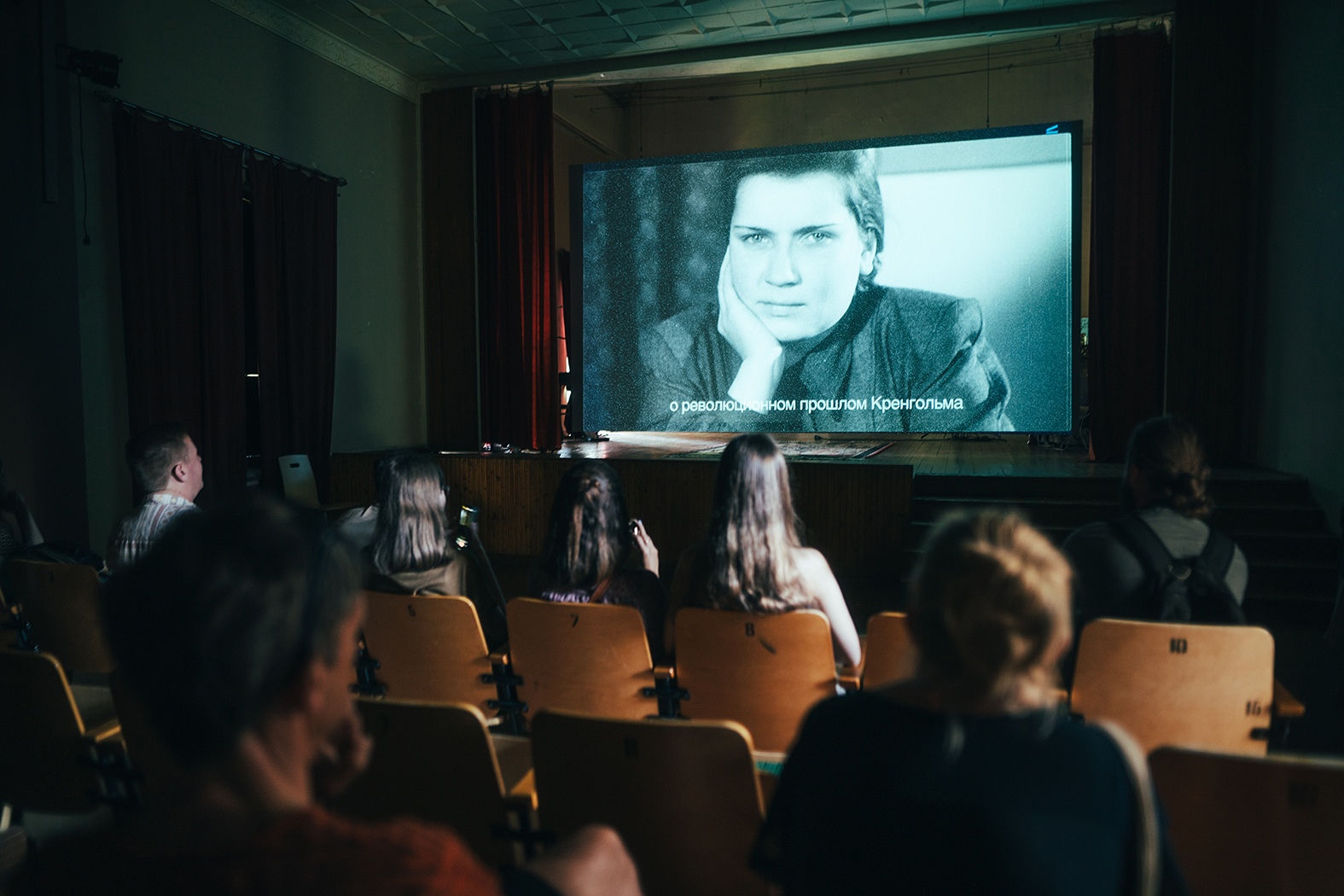
Guided tour at the Narva Art Residency exhibition, 2024. Photo: Anton Semenyura / Station Narva
The most impactful and meaningful residencies are those in which the artist needs the people of Narva, and the people of Narva need the artist. When their interests intersect, a small but powerful spark occurs. For example, Finnish sound artist Jaakko Autio collaborated with three local choirs and singing groups to record a composition inspired by the melodies of the Estonian and Finnish national anthems. For the singers from Narva, this was an “out-of-the-box” experience, as they had never previously engaged with contemporary sound art. The piece created using their voices has since been travelling to galleries across Estonia and Finland.
Another excellent example is the Japanese duo comprising ceramicist Reico Motohara and photographer Kabo, whose residency project involved cooking with local residents to collect their personal stories. The artists visited a dozen homes in Narva, and their visits were greatly appreciated. The collected stories will soon appear in a forthcoming book about Narva to be published in Japan.
Artist Pavel Rotts, who has Ingrian roots, visited the residency multiple times while preparing an exhibition on the bombing of Narva. As part of the public programme, he led workshops on handcrafting bricks from local clay. The facades of buildings in Narva still show damage from the bombing, and symbolically, the handmade bricks were intended to fill these holes. The workshops were very popular, attracting local history enthusiasts and families. These interactions made that tragic event, and local history in general, more tangible for the people of Narva.
A little more than just a residency
NART operates across multiple fronts. Gradually, we have started moving beyond the walls of our neo-Gothic director’s villa. Next to the building, a community garden was established five years ago, which has become particularly vibrant in recent summers. Many artists are interested in gardening, food and ecology, and the Kreenholm garden provides a space for them to experiment and collaborate with locals that share similar interests. Especially heartwarming is our cooperation with a nearby social centre, whose clients actively take part in gardening activities.
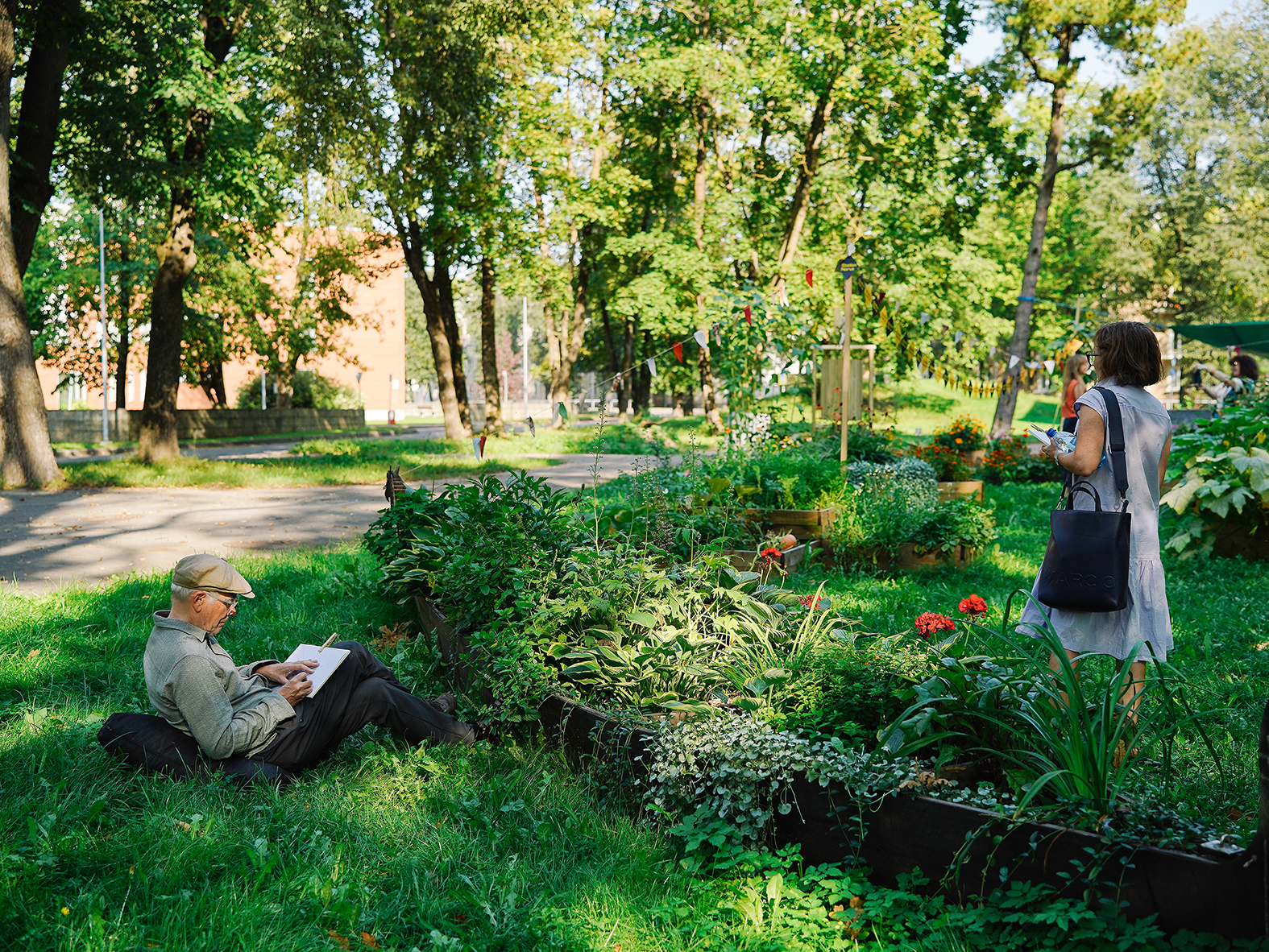
Ellie Pritchard workshop at the community garden, 2024.
Photo: Jelizaveta Gross / Station Narva
A little further away lies Narva Venice. Located by the Narva reservoir, it is canal system with boat garages – people live there, there are saunas, and the community enjoys fishing and spending time by the water. For three years, NART has run a project there called ‘Narva Venice Embassy’, placing international artists within this community. This has greatly enriched interactions between these two communities. Occasionally, cohabitation leads to friction, but even more evident is the quiet transformation brought about by simply having artists present. I recall Mexican artist Enrique Roura, who spent long days constructing a bread oven near a busy walkway. During his work, he interacted with many locals who brought him beer and watermelon to encourage him in his work. Casually, he also took the opportunity to discuss topics such as tolerance, race and LGBT issues – not always easy topics for more conservative communities. Even if not immediately accepted, the seeds planted gradually begin to grow.
There was another kind of incident involving Ukrainian artist Maksym Kozlov, who wanted to research the history of Narva Venice. We introduced him to an elderly local man, but during their conversation, it emerged that this man did not hold Ukrainians in high regard, leading to an argument about the ongoing war. Fortunately, the dispute did not escalate too far. In a later interview to Saara Mildeberg, a PHD student who researched NART, Maksym summed it up as follows: “You don’t need to apologise. We must face this. It’s precisely the reason I’m here. I don’t know what would happen in the same situation if a German or Spanish artist started speaking Russian with this guy. I doubt he’d be immediately hostile. As a Ukrainian, I have a very special chance to confront political hostility, to face imperial history and the Soviet aesthetics [of Narva]. There aren’t many places in the world where we can understand so clearly what politics really is, how dangerous it can be and what threatens Europe today. I love this experience. It’s far more exciting than Disneyland.”
NART has hosted, and will continue to host, Ukrainian artists who wish to come to Narva. Additionally, the residency has provided shelter for hundreds of Ukrainian refugees in transit. In the early months of 2022, many were wondering how to help, both personally and institutionally. Adding a frame to your Facebook profile picture felt insufficient, and various symbolic ideas emerged – such as planting flower beds with blue and yellow tulips. However, soon a more meaningful opportunity arose. Narva became a transit point for refugees who needed a place to rest for a night or two after crossing the border. NART’s student dormitories could easily accommodate them, and volunteers quickly took charge of the entire process. Within the first two and a half months, 350 refugees were housed; we stopped counting after that. For international artists, and indeed for NART itself, this experience has been profound and deeply moving.
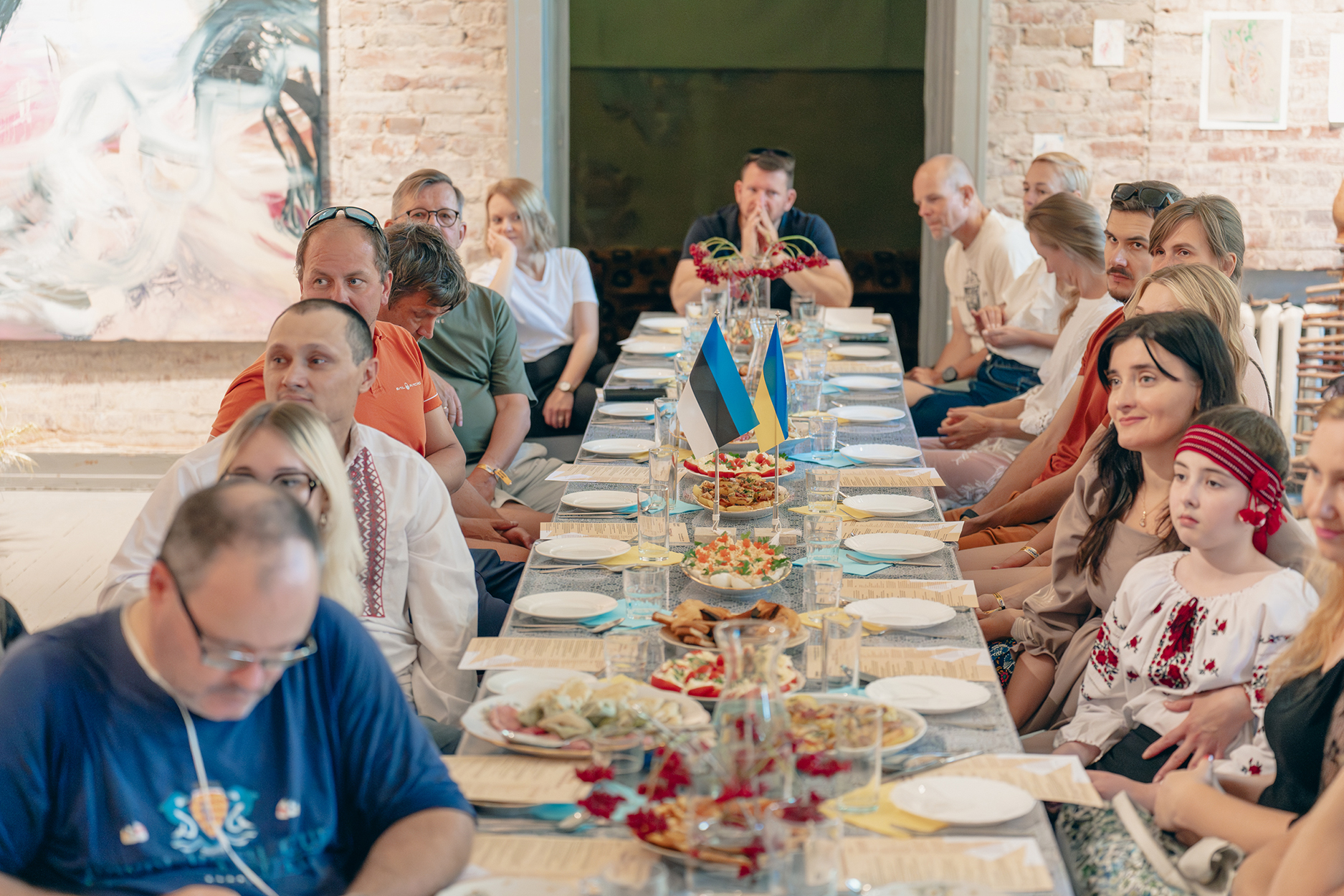
Ukrainian lunch event at Narva Art Residency, 2024. Photo: Dmitri Fedotkin / Station Narva

I believe an art institution can and should play an active role in society, offering support wherever possible. Therefore, art education has also been a focal point in recent years. Art needs help to become more accessible and understandable for the public. Sometimes this takes the form of educational programmes for school groups; other times, larger projects such as creative industry hackathons, visits by the Estonian Academy of Arts to schools in Ida-Viru County, incubation programmes for local artists, art education training for sector stakeholders, and Estonian-speaking artists-in-residence working directly in Narva schools. Soon we will publish a set of educational art exhibition cards specifically designed for language learners, developed in collaboration with Maarin Ektermann and the Estonian Language House in Narva.
That an artist residency has influenced this border town simply through its presence is evident from small but significant moments. For instance, a group of local youth captivated by the art world has found their way to NART. Not wanting to follow conventional paths, they have adopted alternative names during their quest for identity – Kirill has become August, and Veronika is called Alan. Initially attending events as visitors, they later became volunteers. Students from a local vocational school also come for internships and actively participate in workshops run by resident artists. This excitement has resulted in the formation of an art collective, officially registered as an NGO, where young people now independently manage events. For these young individuals, it’s clear that their engagement with the art world has already progressed to the next stage.
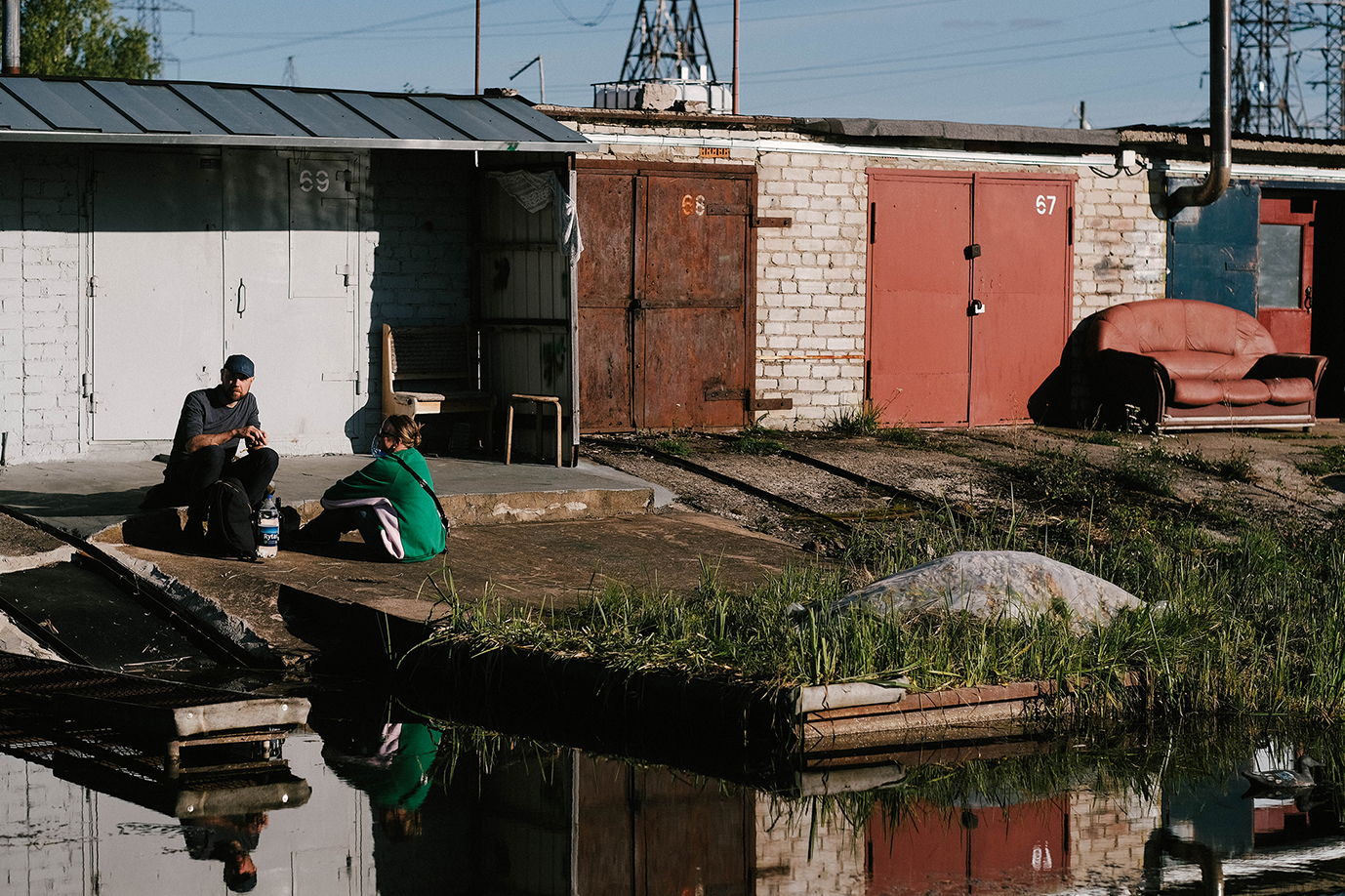
In conclusion
Although considered a peripheral region, Narva provides endless food for thought and the kind of disruptions that nourish creative minds. There’s no fear that future artists-in-residence will ever become bored or find that artistic work here has somehow already been achieved or completed. Life on the border still includes many sensitive issues, such as the seemingly eternal search for local identity and belonging. Creative people, being more attuned than most, grasp these nuances sharply and bring them into focus through their work. Addressing these complexities requires ongoing energy and creative effort.
Perhaps the preceding lines have offered some insight into whether this cultural hub, established in a border town, has made an impact over its first decade and how. What path it will follow in the coming years remains to be seen.
Meanwhile, Narva Art Residency continues steadily in its everyday rhythm – artists from France, the US and Lithuania are departing, while those from Finland, Bangladesh and the UK are arriving. The three residency rooms remain constantly occupied, weekly events attract regular visitors, and art education projects run in parallel with other activities in the everyday flow. And the fact that the border of Europe is within sight and earshot only adds a touch more spice to daily life.